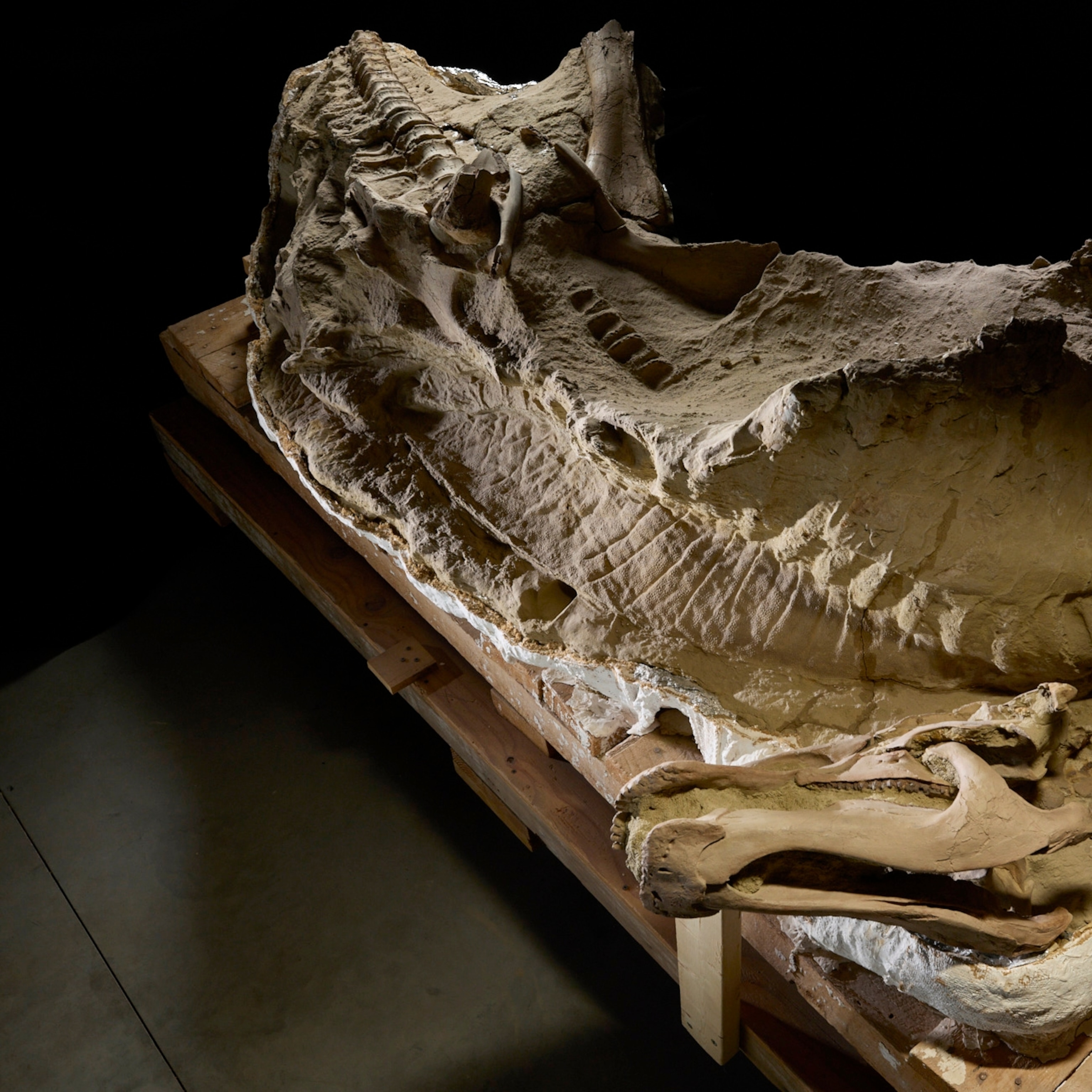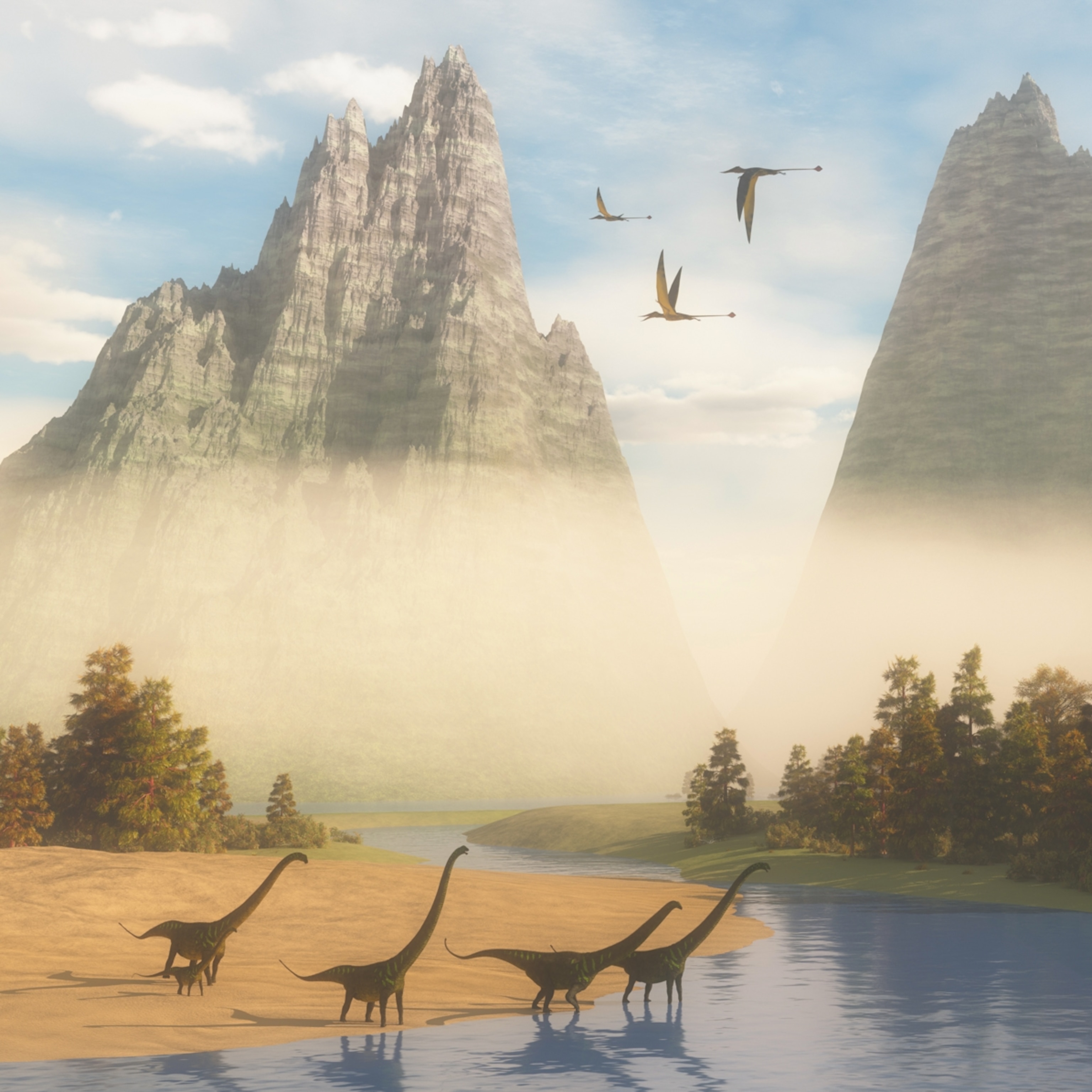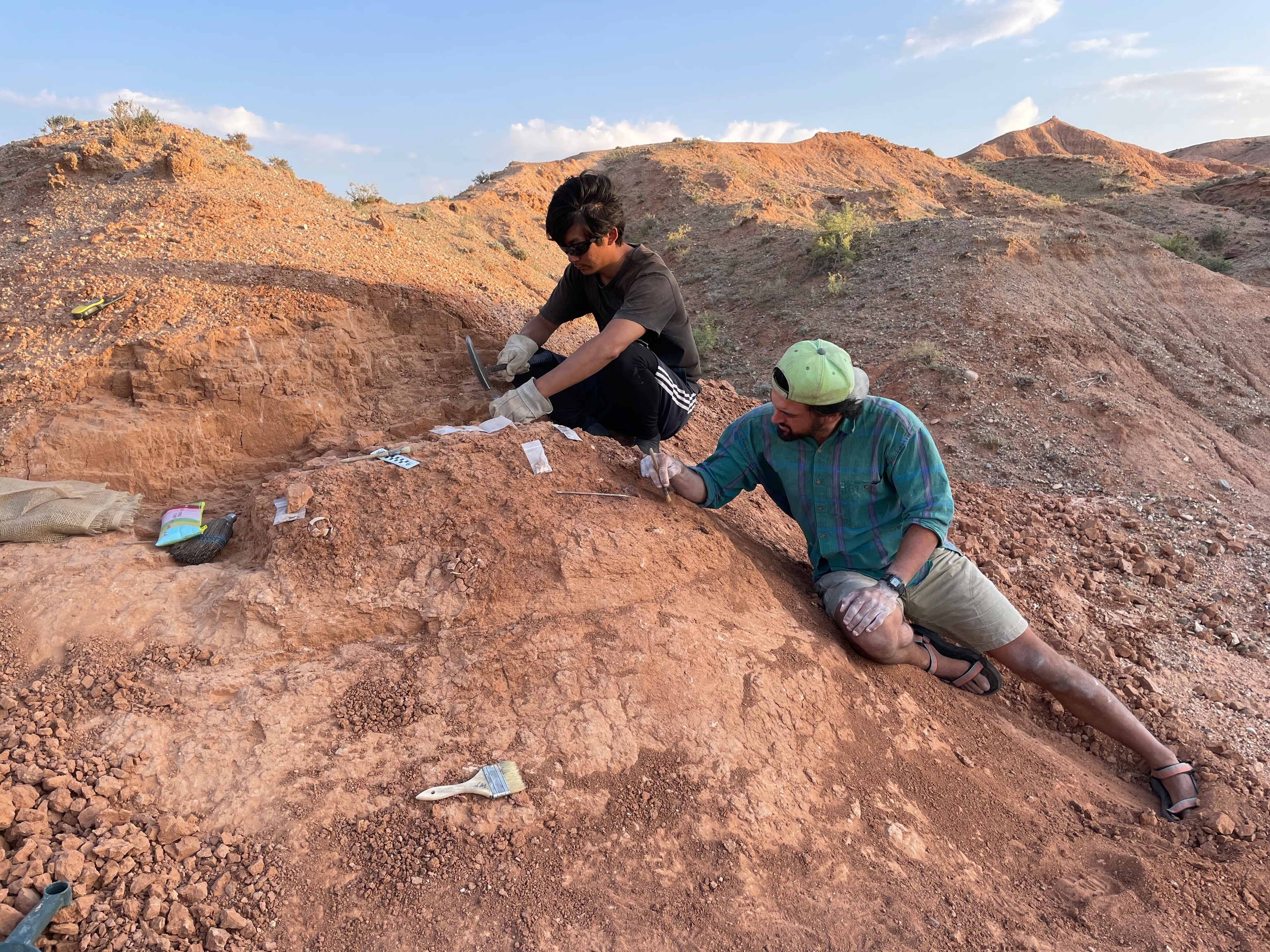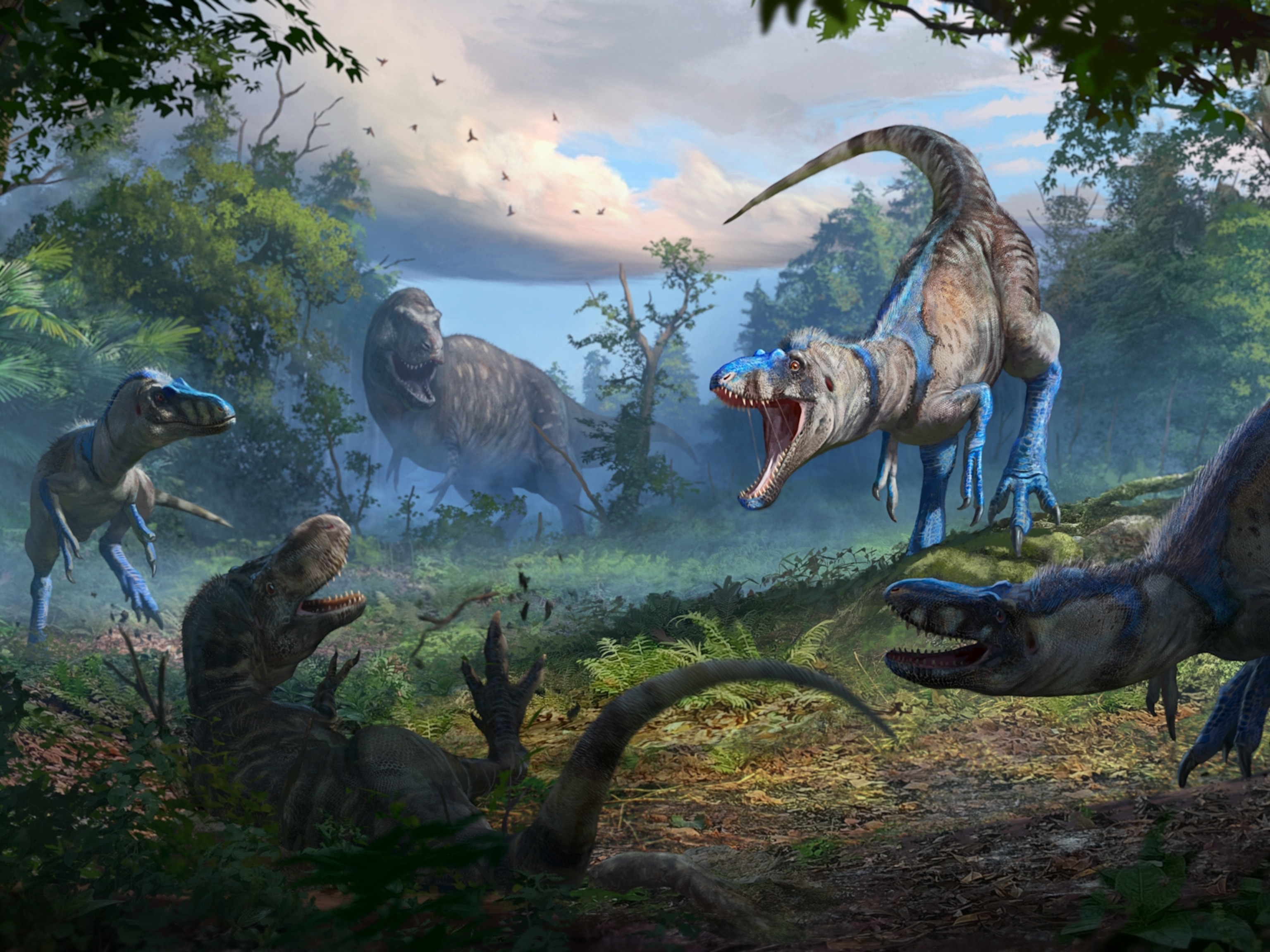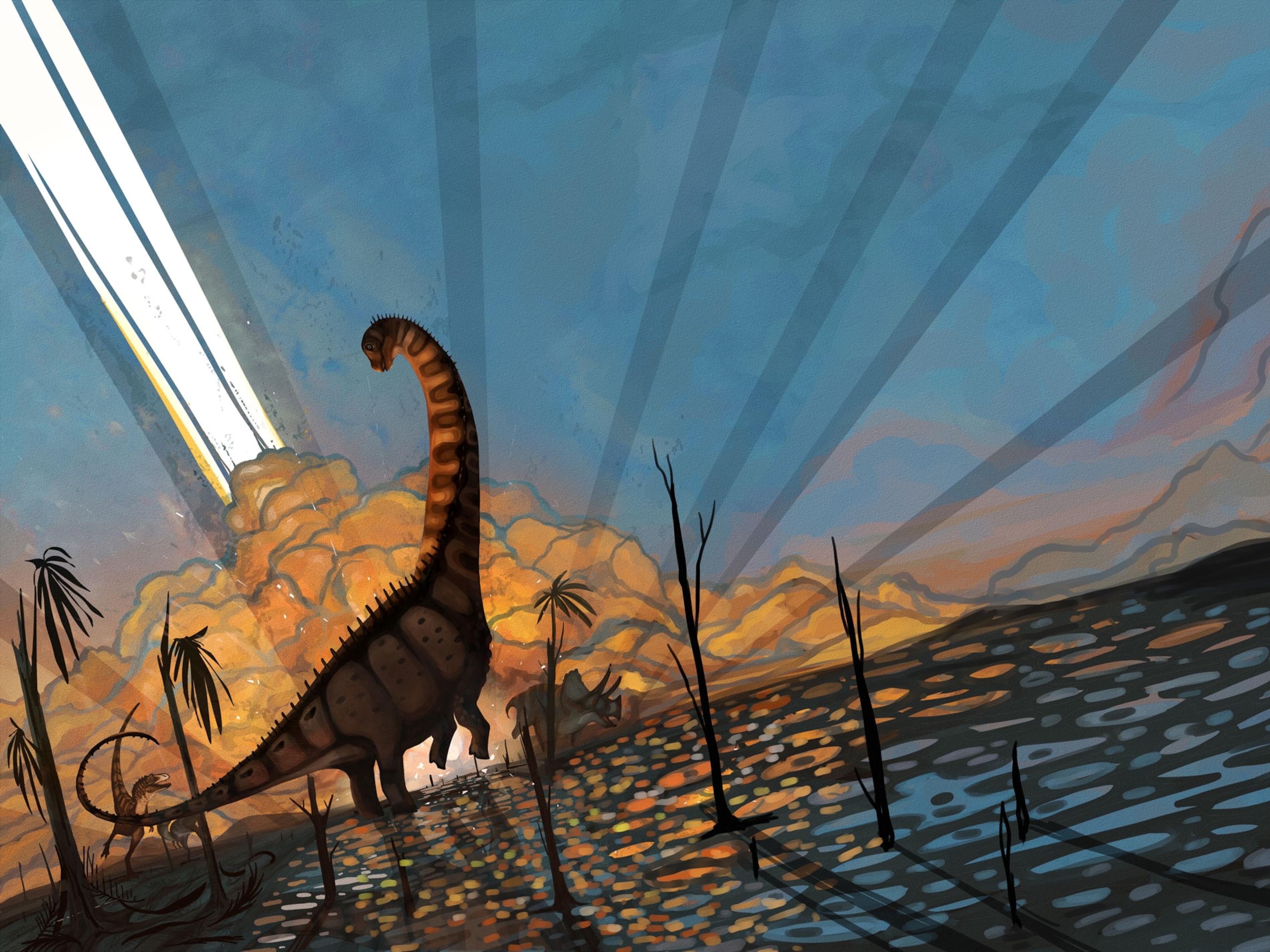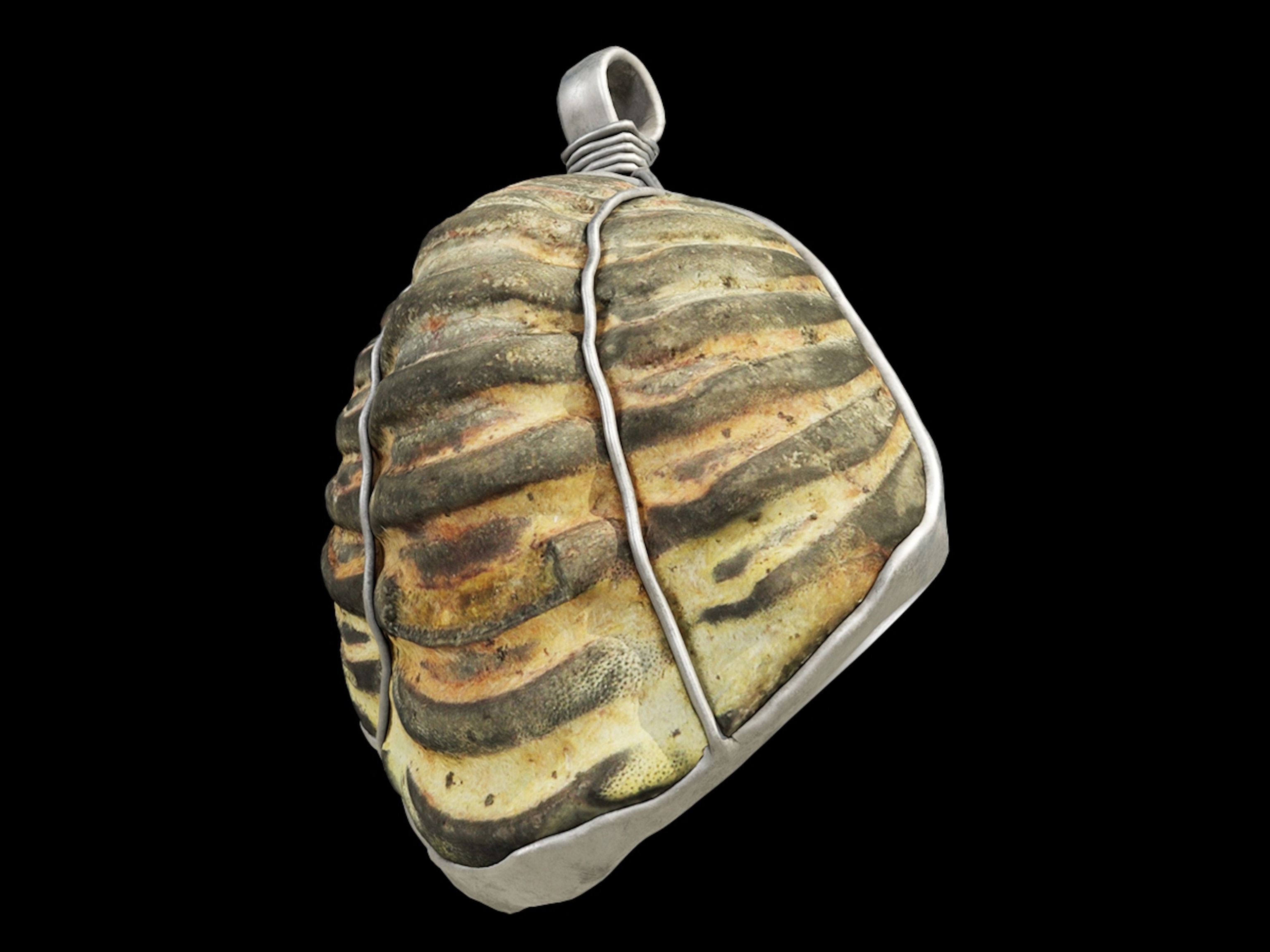
Did tyrannosaurs live in groups? Experts discuss new fossil clues.
A new fossil site reveals a group of tyrannosaurs that died together, providing fresh evidence that these predators engaged in some form of social behavior.
In July 2014, researchers looking for fossil turtles in southern Utah’s public lands found hints of a “monstrous murderer”: the ankle bone of a tyrannosaur named Teratophoneus. Within hours, they had brushed through the sand between pinyon junipers and found the jumbled remains of multiple Teratophoneus—all of which seemed to have died in the same place, at the same time.
Scientists unveiled the site to the world in a study published last Tuesday in the scientific journal PeerJ, suggesting tyrannosaurs congregated in social groups. “Dinosaur behavior, dinosaur ecology, is probably always going to turn out a little more complex than we think at any given time,” says lead study author Alan Titus, a paleontologist with the U.S. Bureau of Land Management who works in Grand Staircase-Escalante National Monument, where the site is located.
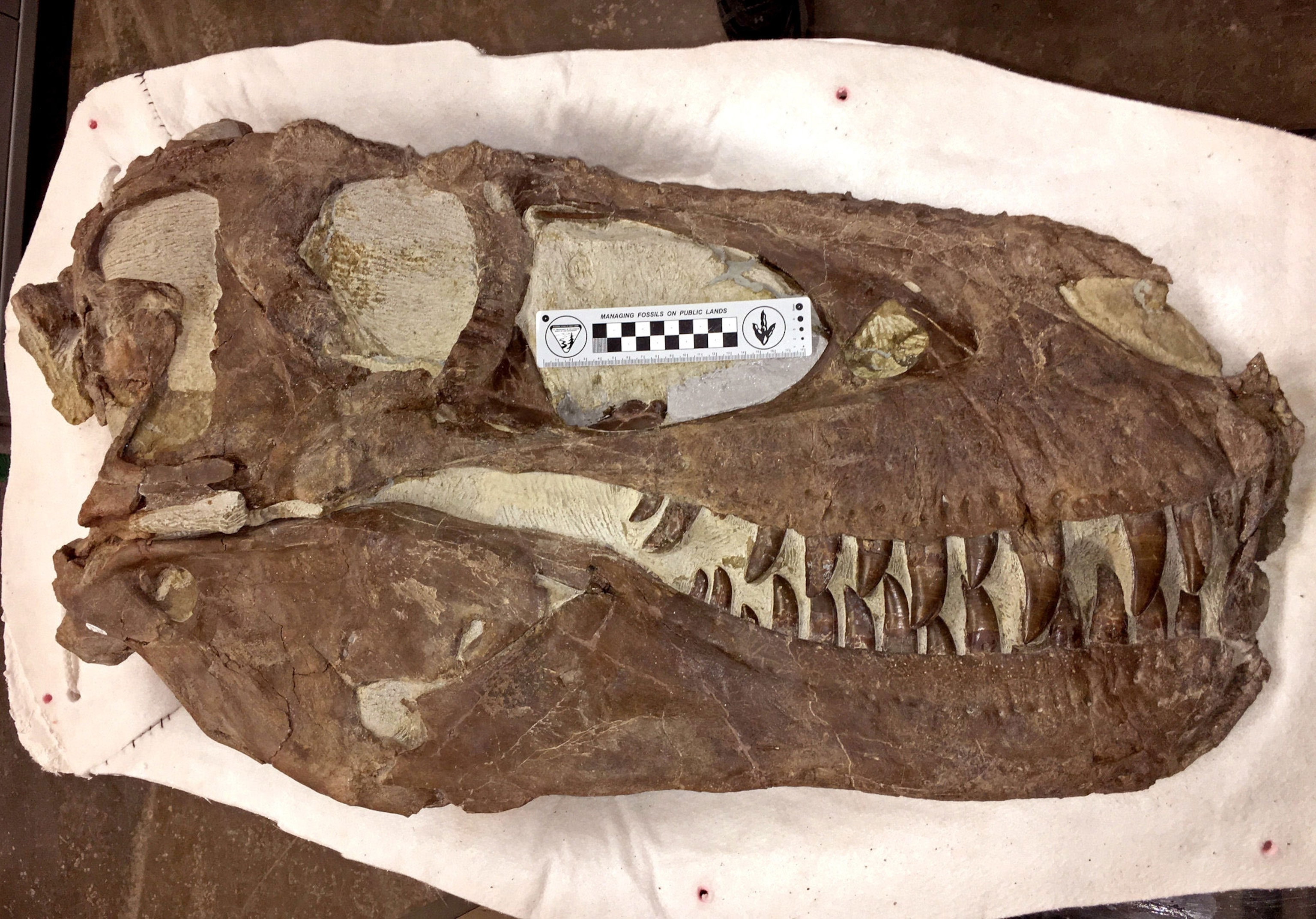
Titus even thinks that the site could be evidence that tyrannosaurs worked together as cooperative pack hunters. “Now you’ve got these giant terrestrial predators behaving in a group, much more akin to a pack of wolves and a pride of lions, [which] is staggering,” he says.
But as he and other experts note, true pack hunting is rare among living predators. And social behavior among predators ranges from the barest tolerance of another individual to coordinated pack attacks.
The new fossils are not the first example of tyrannosaurs discovered in the same place, but a meticulous reconstruction of the area’s geologic history provides strong evidence that they died in a group. The more elusive question is what they were doing together.
Rainbows and Unicorns Quarry
The 75-million-year-old site—named Rainbows and Unicorns Quarry by Titus’s colleague for its apparently incredible specimens—is the first of its kind in the southern U.S. However, it’s far from the only to hint that tyrannosaurs gathered in groups. One bonebed in Alberta, Canada, contains the bodies of 12 to 14 Albertosaurus that were seemingly concentrated together during a flooding event. In Montana, an area about half the size of a tennis court contains the remains of at least three Daspletosaurus. Even the site in South Dakota that yielded the famous T. rex fossil Sue contained remains of other T. rex individuals.
Fossil tracks also add to the picture. In 2014, scientists announced that rocks in British Columbia preserve footprints of three tyrannosaurs that walked in the same direction within a short time of each other, if not at the same time. Researchers argued that the site could point to social behavior, even suggesting a collective noun for a tyrannosaur group: a “terror.”
The new study about the group of Teratophoneus closely examined the sediments in and around the bones. The team suspect that the tyrannosaurs were killed together in a seasonal flood. Their carcasses were then washed into a low-lying lake and buried in a fine-grained mud that got into the bones’ exposed nooks and crannies.
Later, the lake dried up, and after that, a nearby river changed course and flowed over the site where the tyrannosaurs had been entombed. The rush of water stirred up and disarticulated the skeletons, reburying the jumbled bones in the sand that Titus’s team found them in.
The site’s sediments also contain flecks of charcoal, implying that a forest fire broke out around the time the dinosaurs’ remains were reburied.
Socializing tyrannosaurs
With multiple lines of evidence that tyrannosaurs sometimes lived alongside each other, researchers have started to look at relatives of the dinosaurs to form hypotheses about what the dinosaurs may have been doing together.
Thomas Carr, a paleontologist at Carthage College in Kenosha, Wisconsin, who wasn’t involved with the new study, says that finding more signs of social dinosaurs shouldn’t necessarily come as a surprise. Extinct dinosaurs belong to a bigger group called the archosaurs, which includes social animals such as modern birds, alligators, and crocodiles.
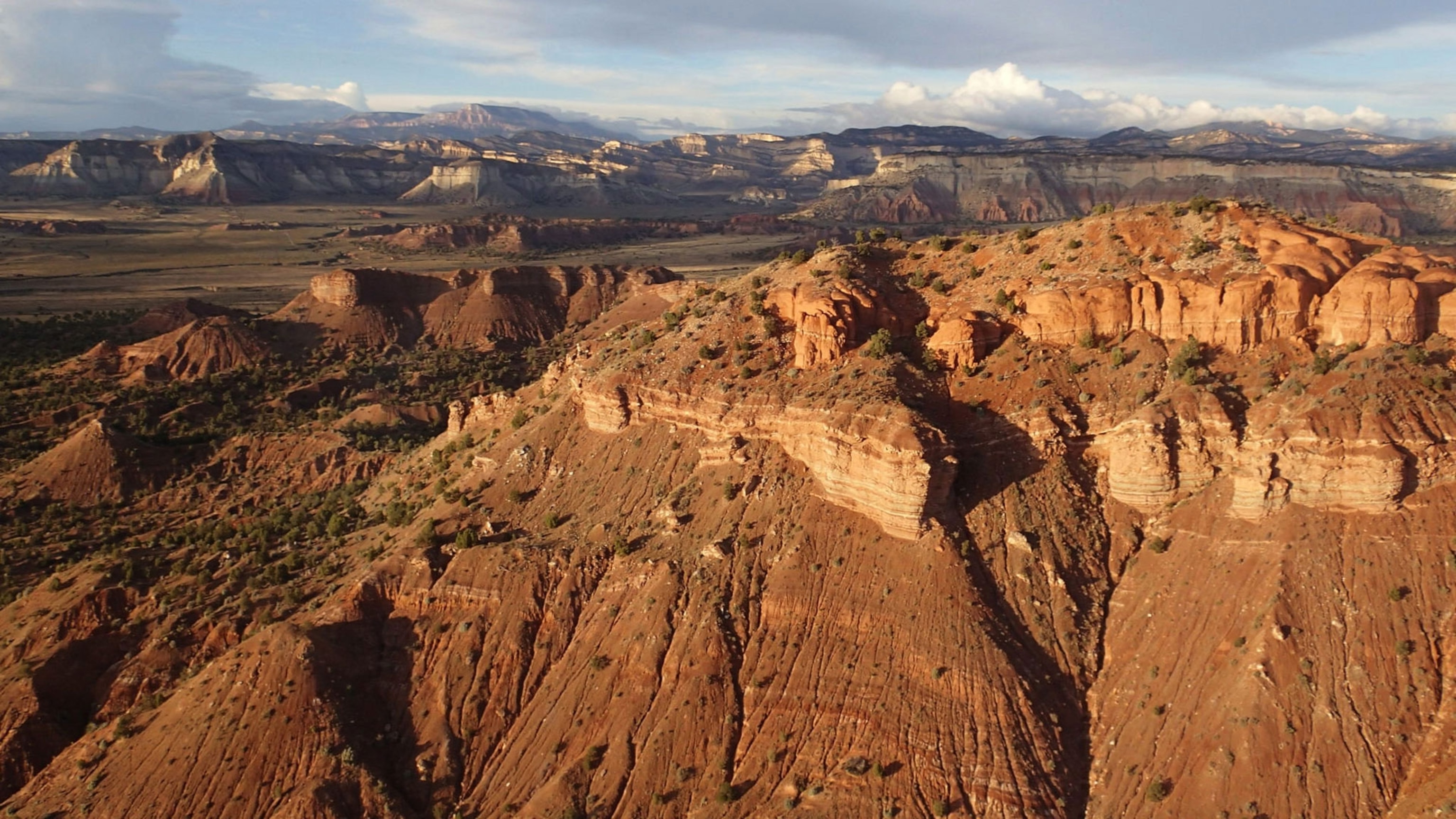
Living archosaurs engage in many forms of social behavior. Sometimes alligators and crocodiles opportunistically go after the same prey without attacking each other, or they steer fish into each other’s mouths. Golden eagles sometimes hunt in pairs. But these behaviors are either extremely rare, or they don’t rely on the rigid social structures that modern wolf packs have.
Examples of true cooperative hunting within the archosaur group are few and far between. Perhaps the best example is Harris’s hawk, a bird of prey that lives in the southwestern U.S. Over part of its range, groups of three to seven hawks nest and hunt together. But in some habitats, the hawks nest only in pairs.
Even if extinct dinosaurs did hunt in groups, modern pack hunters might not be perfect analogs. In a 2020 study, a team led by paleontologist Joseph Frederickson looked at the Velociraptor relative Deinonychus, which some paleontologists had speculated was a wolf-like pack hunter. In living wolves, pups feed on the adults’ kills, so to test whether Deinonychus did the same thing, Frederickson measured chemical traces within small and large Deinonychus teeth found at the same sites.
The sets of teeth were chemically distinct, which means the juveniles and adults weren’t eating the same things, throwing cold water on the idea that Deinonychus was a bona fide pack hunter.
So what were the Teratophoneus doing together? “As much as I love testing this stuff—as cool as the concept is to me—I’m not sure we’ll ever know an answer to this question,” says Frederickson, the director of the University of Wisconsin’s Weis Earth Science Museum. “Dinosaur behavior might always be a slight mystery to us.”
Dino brains
Another way scientists can learn about tyrannosaurs’ behavior is by looking at what we know about their brains. In comparison to their close relatives, Carr says, tyrannosaurs had pretty sophisticated brains that had enlarged regions associated with balance and smell. But as a percentage of their body size, tyrannosaurs’ brains were smaller than those of modern birds and closer to what we see in modern alligators and crocodiles.
Alligators and crocodiles can be social and often live in high densities, but none regularly hunt in packs. If they ever do hunt in a coordinated fashion, as some researchers have argued, it seems to be rarely observed.
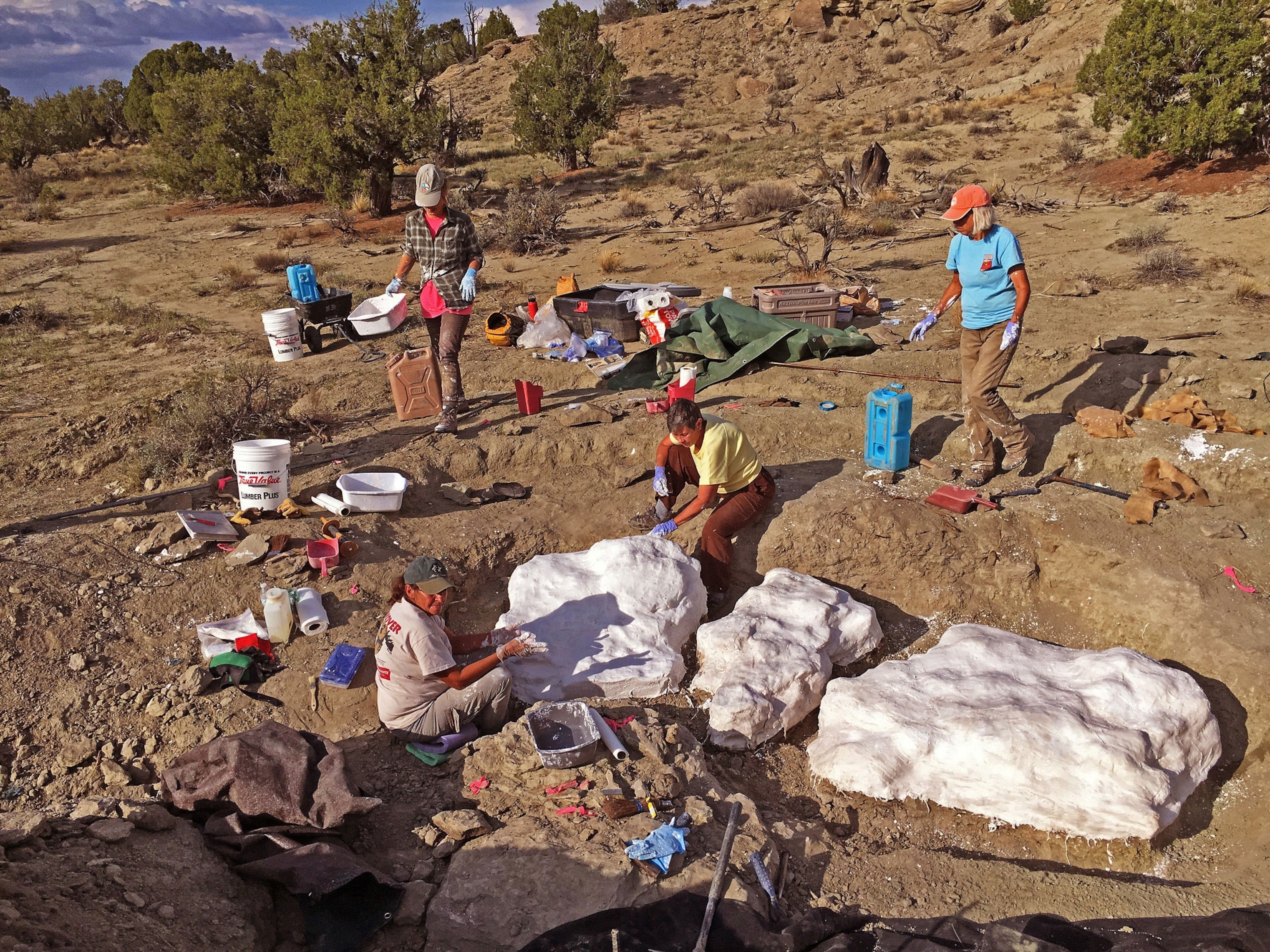
That said, it’s not easy to reconstruct an animal’s brain, let alone determine the kinds of behaviors it could enable, says Amy Balanoff, an evolutionary biologist at Johns Hopkins University who studies the evolution of bird brains. “It just comes down to the fact that brains are really complicated … it’s about brain size, it’s about connections, it’s about the size of the connections,” she says.
Balanoff adds that knowing as much as possible about tyrannosaurs’ behavior—such as whether they brooded their eggs, for instance—would help fill in the details.
Perhaps Utah’s Rainbows and Unicorns Quarry will help provide a clearer picture. Titus and his colleagues plan to run more studies on the Teratophoneus site, perhaps including the same kind of chemical work that Frederickson did with Deinonychus teeth.
They also plan more digging—not just for dinosaurs, but for other fossils, too. The site was once a freshwater lake and river channel, and it contains the bones of giant freshwater turtles as well as the remains of the giant ancient croc Deinosuchus.
Titus has been enthusiastically talking up the site—leading to his colleague’s joke that it sounded too good to be true, containing “rainbows and unicorns.” Now, though, “I think the name is almost underselling it,” he quips.

